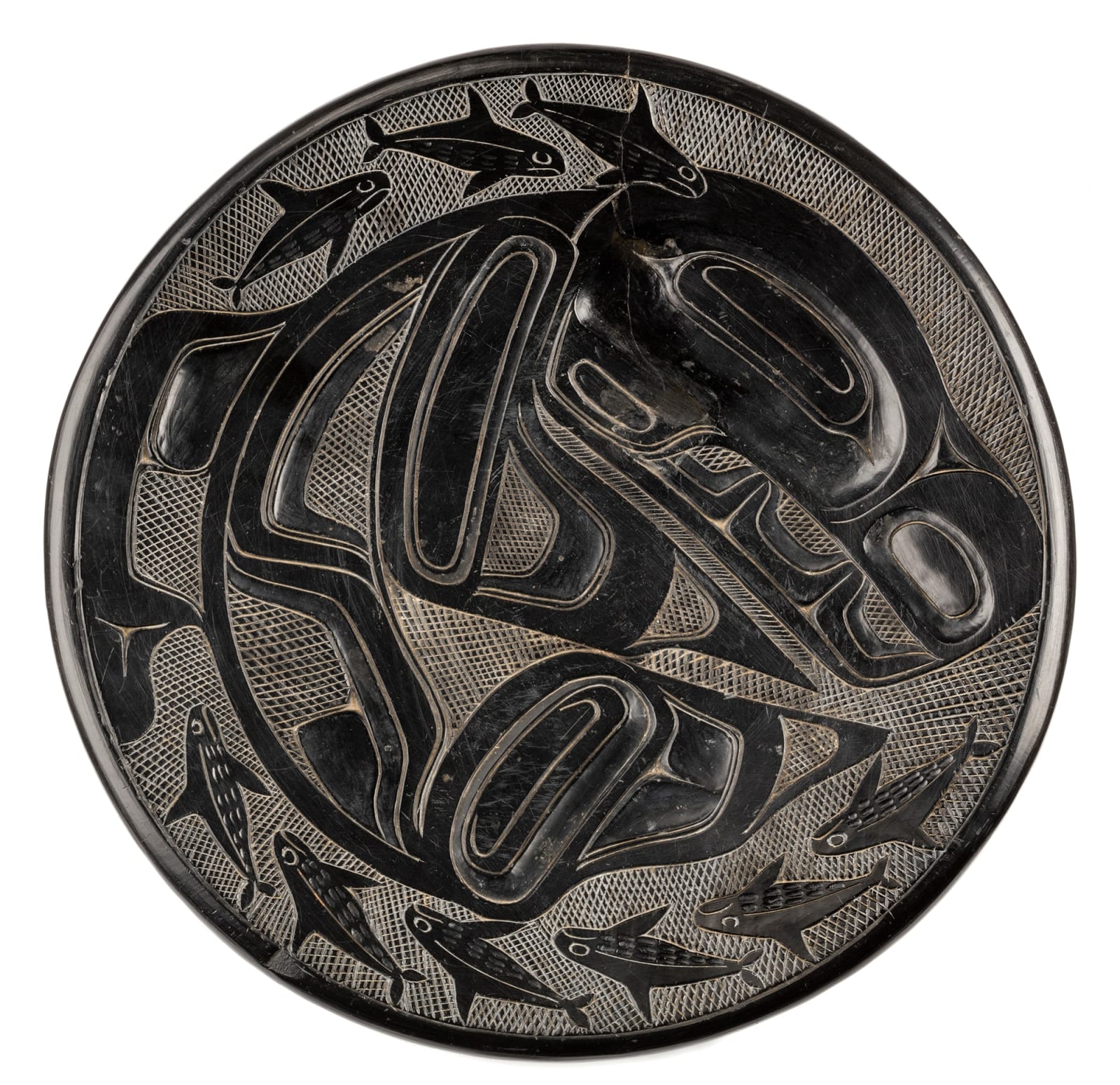-
Artworks
UNIDENTIFIED HAIDA MAKER
Whale Platter, 1965-1910argillite, 1.75 x 11.5 x 11.5 in (4.4 x 29.2 x 29.2 cm)
unsigned.
LOT 55
ESTIMATE: $8,000 — $12,000
PRICE REALIZED: $16,800.00Further images
A large whale is shown curled up within the border of this shallow plate or platter, a round form sometimes referred to as a ‘charger’. The whale is composed of...A large whale is shown curled up within the border of this shallow plate or platter, a round form sometimes referred to as a ‘charger’. The whale is composed of a large head with a mammalian snout, a big pectoral fin made up of a long narrow ovoid and several U-shapes, a tail composed of a rounded ovoid and two U-shapes, and a wide, short dorsal fin extending to the rim from the long, curved line of the whale’s backbone. The formline construction of the whale’s head and body is composed in a style indicative of a period between about 1880 and 1900.
On the cross-hatched background between the whale and the rim of the plate swims a group of nine small whales or fish, representing either the offspring or the prey of the whale. On the bottom of the platter, lightly engraved into the surface, the image of a large octopus or devilfish is attacking two whales.
Steven C. Brown
The Haida revival period beginning c. 1880 brought a return to traditional forms, even if these were configured in new ways or combined with narratives. (Macnair and Hoover, 2002:94). Thus the crest-like figure of the whale is supplemented with the small fish or whales, while the back of the platter depicts a fanciful struggle among giant denizens of the deep.
References: See the chapter on argillite plates and platters in Leslie Drew and Douglas Wilson, Argillite: Art of the Haida (Vancouver: Hancock House, 1980), pp. 200-209; p. 206 illustrates an oval platter attributed to William Dixon, depicting an octopus and salmon among other imagery. The platter is also illustrated in Marius Barbeau, Haida Carvers in Argillite (Ottawa: National Museum of Man, 1957/1974), fig. 7, in the chapter on platters, pp. 10-20. See also the chapter on Haida-style platters and plates in Peter L. Macnair and Alan J. Hoover, The Magic Leaves: A History of Haida Argillite Carving (Victoria: Royal BC Museum, 1984/2002), pp. 94-99. For an argillite platter depicting three sailors battling a giant octopus see Thomas Vaughan and Bill Holm, Soft Gold: The Fur Trade & Cultural Exchange on the Northwest Coast of America, fig. 119.Provenance
Ex. Coll. of J.W. Carpenter, New Jersey;
A New York Collection.
Join our mailing list
* denotes required fields
We will process the personal data you have supplied in accordance with our privacy policy (available on request). You can unsubscribe or change your preferences at any time by clicking the link in our emails.








